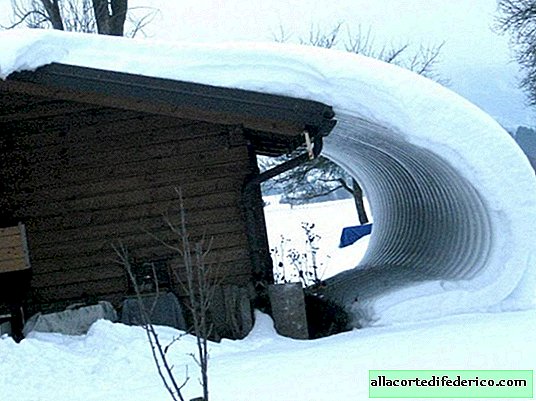Nilomers: the ancient Egyptians built not only temples and pyramids, but also water-measuring posts
Perhaps no other civilization of the Ancient World depended so much on one river as Ancient Egypt on the Nile. By the way the Nile spill will be, it was possible to predict the size of the crop, and therefore the well-being of the entire state.
 Crocodile-headed Sebek - the god of water and the Nile floods in Ancient Egypt, one of the most revered gods in whose honor temples were erected
Crocodile-headed Sebek - the god of water and the Nile floods in Ancient Egypt, one of the most revered gods in whose honor temples were erectedIf the river was too full, then catastrophic floods occurred in Egypt, and in the case of a small flood of the river a large crop could not be expected. Both that and another did not bode well for the rulers of Egypt, and if the Neil “upset” the Egyptians for several years in a row, then this put the country on the brink of destruction. Crop riots and lack of food supplies caused riots, the Egyptian army was left without supplies and could not make military campaigns, as well as protect the borders of the country from external enemies.
 Ancient Egypt's agriculture was completely dependent on the Nile
Ancient Egypt's agriculture was completely dependent on the NileThe pharaohs and priests understood how much their state depended on the Nile. And in order to observe this river and to predict an increase in the level, and consequently, the beginning of agricultural work, a network of water meter posts was created along the entire length of the river within Egypt. These ancient structures in the form of stone buildings with stairs were called nilomeres. And after Egypt was captured by the Arabs, the ancient nilomers continued to use and built new ones, since without them it was impossible to conduct successful agriculture in the country. Egyptian nilomers of the time of the pharaohs reconstructed and maintained in working condition throughout the country's history until the 20th century.
 Nilomer on Elephantine Island
Nilomer on Elephantine Island  Water meter scale on Elephantine nilomer
Water meter scale on Elephantine nilomerThe highest water gauge post was on the island of Elephantine, near the border with Nubia. The modern name of the island is Geziret Aswan, and it is part of the city of Aswan. Nilomer on the island is quite well preserved, as well as a number of other buildings from the time of Ancient Egypt, so tourists visiting Aswan can see it.
 Nilomer Building on Roda Island, Cairo
Nilomer Building on Roda Island, CairoCairo also has an ancient nilomer, which is located on the island of Roda. Data on the Nile level, which has been recorded here since 621 AD, has been preserved, and this is considered a record of continuous monitoring of the water level on Earth.
 Nilomer in the temple of Kom Ombo in Upper Egypt.
Nilomer in the temple of Kom Ombo in Upper Egypt.In total, about 20 nilomers remained in Egypt, which, after the construction of the Aswan Dam, lost their practical function. The dam was built not only to generate electricity, but also to regulate the water level in the Nile. After its construction, the problem of catastrophic floods, as well as crop failures due to drought, was solved.
 The fertile Nile Valley and the lifeless desert sands
The fertile Nile Valley and the lifeless desert sands

















